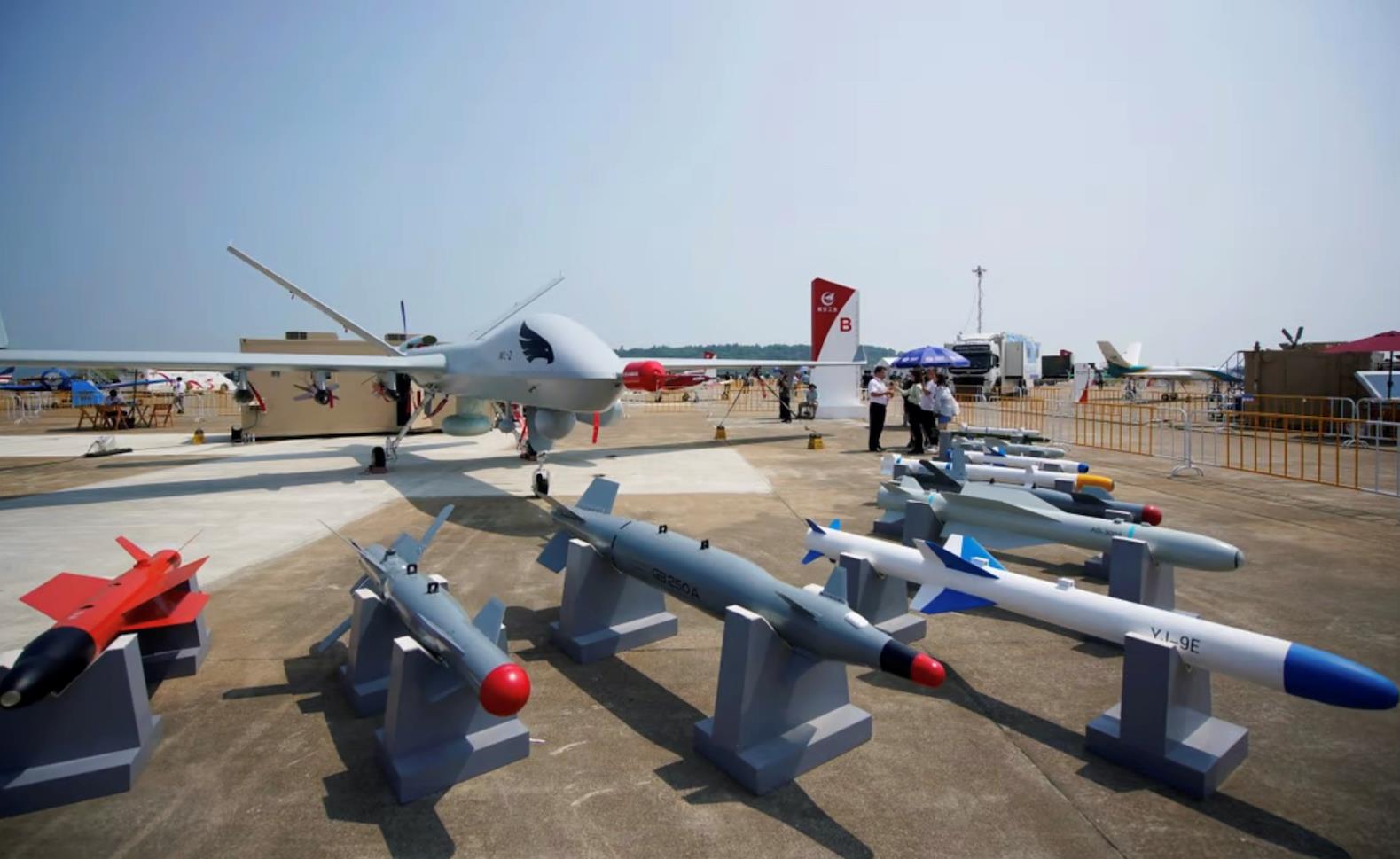
China Reveals New Rapid-Fire Drone Launch System
China has developed a new launch system that claims to put drones airborne quicker and safer, enabling a faster tempo of operations when using the weapon.
Last week, Chinese aerospace firm AVIC Chengdu Aircraft Industrial Group filed a patent for a drone launch system that catapults drones into the air without emitting light, sound or exhaust, potentially overcoming the limitations of traditional bungee catapults and rocket boosters.
Bungee catapults are limited to launching lighter drones and suffer from significant deceleration across the launch rail while the sudden jerking motion can damage drones' sensitive electronics. Rocket boosters, meanwhile, create significant amounts of noise, smoke, light and sound, which may reveal drone launch locations and expose troops to danger.
The new launch system, on the other hand, consists of a hollow cylinder separated into two chambers by a piston that can slide horizontally within the cylinder according to air pressure changes between the two chambers. The piston is connected to a pulley system and a thrust arm to an external shuttle that travels along a launch rail, on which the drone is mounted.
The system operates by injecting high-pressure air into the first chamber while a vacuum pump lowers the air pressure in the second chamber. This makes the piston move horizontally, pulling the shuttle from one end of the cylinder to the other to launch the drone.
“With the pulling of the thrust arm and the pulley system, the shuttle with the drone will move forward on the launch rack at a velocity several times quicker than the velocity of the piston,” AVIC's patent reads.
The new launch system is also capable of launching drones in quick succession, taking only up to five seconds to return to launch position. However, the technology remains untested.
“Whether it's useful, it remains to be seen,” says Zhou Chenming, a researcher from the Yuan Wang military science and technology think tank. He also cautioned that the significance of the patent should not be overstated.
Drone swarming is an emerging capability among today's modern militaries. That tactic requires a method to get multiple drones airborne in a relatively short period of time.

Armed reconnaissance drones used by China's air force are based on Avic Chengdu's Wing Loong I and Wing Loong II (pictured). Photo: Agencies
China's new drone launch technology may improve the survivability of its drone swarm systems, notably the ASN-301/JWS-01 anti-radiation drone , which may play a critical role in an invasion of Taiwan.
The ASN-301/JWS-01 is essentially a Chinese copy of the Israeli Harpy loitering munition. In 1994, China purchased an undisclosed number of Harpy drones from Israel, and in 2003 China contacted Israel Aerospace Industries (IAI) to upgrade their units.
However, US pressure forced Israel to abandon its contract to upgrade China's Harpy units over concerns that they posed a significant risk to Taiwan, despite the drones having no US-made components in them. This may have forced China to reverse-engineer the Harpy drone to break its dependence on Israel.
Like the Israeli original, China's ASN-301/JWS-01 is designed for the suppression of enemy air defenses (SEAD) missions. The launch vehicle can carry six rocket-assisted-launch loitering munitions which are equipped with passive radar seekers against enemy radar stations.
Each 135-kilogram ASN-301/JWS-01 has a four-hour flight endurance, 220 kilometers per hour top speed and 288-kilometer range, with the system capable of engaging up to eight pre-set radar targets.
However, the rocket-assisted launch of the ASN-301/JWS-01 may become a vulnerability in a Taiwan scenario. Taiwanese and US intelligence, surveillance and reconnaissance (ISR) assets such as drones and satellites may be able to spot ASN-301/JWS-01 launches and call cruise missile strikes on them.
China likely aims to phase out the older rocket-assisted launch technology used by the ASN-301/JWS-01 in favor of its newer air piston-based launch technology.
Such an upgrade would eliminate the significant launch signature associated with rockets, possibly making it easier for China to pull off a pre-emptive strike against Taiwan's air defense radars while reducing the success chances of Taiwanese and US retaliation strikes.
China has previously used compressed air launch technology for smaller drones, notably in its“barrage swarm” weapon that launches 48 drones to attack a target, which it first tested in 2020.
Each suicide drone has a high explosive warhead and is ejected out of the trailer launcher using compressed air, after which its wings unfold and fly towards its target powered by an electric motor.

China's new AI-powered Zhu Hai Yun drone mothership. Image: Twitter
Such a weapon could be an intelligent version of traditional rocket artillery, boasting a minimal launch signature to prevent counterbattery fire, capable of precision attacks and able to deliver huge amounts of firepower in a short time.
The new launch technology could also potentially be adapted for maritime applications. Last month, China launched the world's first AI-powered drone mothership .
Its AI operating system allows it to carry 50 flying, surface and submersible drones that can launch and recover autonomously, with its drones capable of maritime intelligence-gathering over vast swathes of ocean or swarm attacks against enemy warships and shore defenses.

Legal Disclaimer:
MENAFN provides the information “as is” without warranty of any kind. We do not accept any responsibility or liability for the accuracy, content, images, videos, licenses, completeness, legality, or reliability of the information contained in this article. If you have any complaints or copyright issues related to this article, kindly contact the provider above.






















Comments
No comment